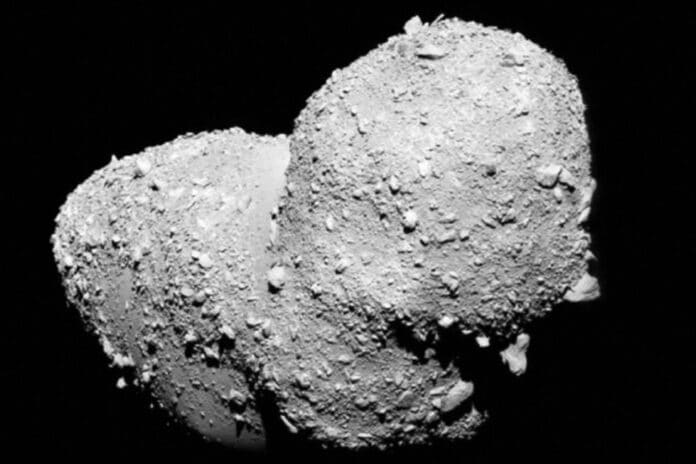Researchers at the University of Arizona Lunar and Planetary Laboratory have discovered a smattering of tiny salt crystals in a sample from an asteroid brought to Earth by the Japanese Hayabusa spacecraft. The sample’s origin from an S-type asteroid, known to lack hydrated or water-bearing minerals often, makes it even more intriguing, claims the research team. The finding makes it appear more likely than not that a sizable number of asteroids racing across the solar system are less dry than previously believed.
The Japanese Hayabusa mission collected the sample from asteroid Itokawa in 2005 and brought it to Earth in 2010. After a detailed analysis, researchers found that the grains look precisely like what you would see if you took table salt at home and placed it under an electron microscope. They’re these nice, square crystals.
The study is the first to demonstrate that the salt crystals came from the parent asteroid, ruling out the possibility that they formed due to contamination after the sample arrived on Earth. This issue had plagued earlier studies that discovered sodium chloride in meteorites with a similar origin.
Tom Zega, the study’s senior author and a professor of planetary sciences at the Arizona Lunar and Planetary Laboratory, said, “The samples represent a type of extraterrestrial rock known as an ordinary chondrite. Derived from so-called S-type asteroids such as Itokawa, this type makes up about 87% of meteorites collected on Earth. Very few of them have been found to contain water-bearing minerals.”
“Our discovery of sodium chloride tells us this asteroid population could harbor much more water than we thought.”
Researchers believe that Earth is formed in the inner region of the solar nebula, where temperatures were very high – too high for water vapor to condense from the gas. In other words, the water on Earth had to come from the solar nebula’s outermost regions, where it could exist at considerably colder temperatures and most likely in the form of ice. The most plausible explanation is that comets or C-type asteroids located farther away in the solar nebula moved inward and struck the newborn Earth to deliver their watery cargo.
Any theory that explains how water got to the early Earth must consider the possibility that ordinary chondrites, far closer to the sun than their “wetter” siblings, may have included water.
The study’s sample is a tiny dust particle with a diameter of around 150 micrometers, or nearly twice the width of a human hair, from which the team took a small portion for analysis that was only 5 microns wide.
She ruled out the possibility that the sodium chloride was contaminated by human sweat, the procedure for preparing the sample, or exposure to laboratory dampness using several different approaches.
The scientists compared before-and-after pictures because the material had been preserved for five years. The photos ruled out the idea that any of the grains were deposited into the sample during that time because they revealed that sodium chloride grains’ distribution had not changed. She also conducted a control experiment, subjecting a collection of terrestrial rock samples to the same treatment as the Itokawa sample and analyzing them under an electron microscope.
Zega said, “The terrestrial samples did not contain sodium chloride, which convinced us the salt in our sample is native to the asteroid Itokawa. We ruled out every possible source of contamination.”
“Tons of extraterrestrial matter is raining down on Earth every day, but most of it burns up in the atmosphere and never reaches the surface. You need a large enough rock to survive entry and deliver that water.”
Itokawa is a peanut-shaped near-Earth asteroid thought to have broken off from a much bigger parent body. It is roughly 2,000 feet long and 750 feet in diameter. According to Che and Zega, it is conceivable that frozen water and frozen hydrogen chloride may have amassed there and that naturally occurring radioactive element decay, as well as frequent meteorite bombardment during the early solar system’s history, may have provided enough heat to sustain hydrothermal processes involving liquid water.
Zega said, “Once these ingredients come together to form asteroids, there is a potential for liquid water to form. And once you have liquids form, you can think of them as occupying cavities in the asteroid and potentially do water chemistry.”
Journal Reference:
- Che, S., Zega, T.J. Hydrothermal fluid activity on asteroid Itokawa. Nature Astronomy (2023). DOI: 10.1038/s41550-023-02012-x
